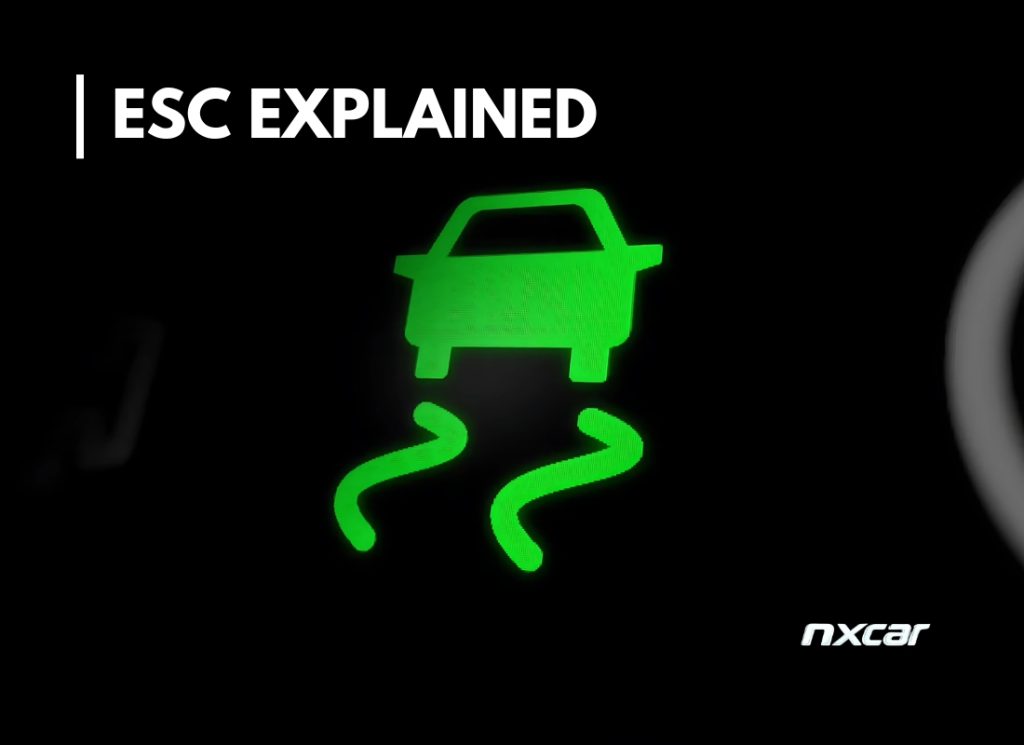Imagine this: you’re cruising down a rain-slick highway, tires gliding precariously over the shimmering surface. A slight overcorrection of the steering wheel, and suddenly the car begins to fishtail, sliding out of your control. It’s in these critical, heart-stopping seconds that countless drivers find themselves helpless, fighting against forces stronger than their reflexes. The problem isn’t just the road—it’s the razor-thin margin between stability and chaos.
Now, picture the panic amplifying. The rear of the car swerves wider, momentum dragging you toward the guardrail. Adrenaline spikes, your grip tightens, but the vehicle refuses to listen. Countless accidents each year begin exactly like this—ordinary drives turned disastrous by a patch of ice, a sharp curve, or a sudden swerve to avoid an obstacle. Without intervention, these moments can spiral into tragedy, leaving wreckage and regret behind.
Here’s where technology steps in as an unseen co-pilot. Electronic Stability Control Explained is not just about mechanical jargon—it’s about a silent safeguard engineered to keep drivers on the road and out of harm’s way. By automatically detecting loss of traction and subtly correcting steering and braking, this system transforms a near-collision into a non-event. It doesn’t demand heroics from the driver. It simply steps in, almost invisibly, restoring balance when physics threatens to betray you.
In a world where a split second can mean the difference between disaster and safety, understanding Electronic Stability Control Explained is essential. This isn’t a luxury feature. It’s a lifesaving innovation quietly built into modern vehicles, one that turns peril into poise—and gives drivers the confidence to face the unpredictable roads ahead.
What Doesn Electronic Stability Control do?
When a vehicle suddenly skids on a rain-slick curve or swerves to avoid an obstacle, drivers often discover just how fragile control can be. That is precisely where Electronic Stability Control Explained begins to reveal its importance. This system is not a flashy add-on; it is a quiet guardian, designed to counter the chaotic forces of momentum and traction loss before they spiral into catastrophe.
At its core, the system continuously monitors steering input, wheel speed, and lateral motion. When the vehicle starts drifting away from the driver’s intended path, microprocessors interpret the deviation within milliseconds. The response is subtle but profound: targeted braking applied to individual wheels, sometimes paired with a gentle reduction in engine power. Instead of a fishtailing rear end or a dangerously widening arc through a corner, the car is coaxed back into alignment, restoring stability almost imperceptibly.
Unlike anti-lock brakes or traction control alone, Electronic Stability Control Explained orchestrates a symphony of sensors and hydraulic commands to intervene precisely when human reflexes are too slow. It doesn’t prevent every accident, but it dramatically reduces the odds of rollovers, spinouts, and loss-of-control crashes that often turn deadly. For drivers, the experience feels less like intervention and more like the car “magically” finding its footing again.
The genius lies in its invisibility. Most drivers will never consciously notice the system at work, yet countless collisions are avoided because of its intervention. In an era where advanced safety often gets overshadowed by entertainment screens and luxury trimmings, Electronic Stability Control Explained stands out as a genuine lifesaver—technology engineered not for show, but for survival. It is the unseen hand that steadies the wheel when conditions conspire against control.
How Doesn Electronic Stability Control Work?
Modern driving often feels effortless, but beneath that sense of ease lies an intricate network of safety systems working relentlessly in the background. Among the most vital is stability assistance, a safeguard that springs into action in the split second when grip falters and chaos looms. To truly understand the mechanics behind this innovation, it helps to see Electronic Stability Control Explained as both a watchful eye and a guiding hand.
The process begins with an array of sensors, each one tracking critical movements of the vehicle. Steering angle, wheel rotation, yaw rate, and lateral acceleration are measured constantly, building a real-time picture of where the car is headed versus where the driver intends it to go. When the system detects a dangerous discrepancy—say, the tires sliding wide through a sharp corner or the rear threatening to spin out—it reacts faster than any human could.
The intervention is precise. Instead of applying blanket braking or cutting power abruptly, the system selectively brakes individual wheels. For example, a gentle tap on the inside rear wheel can nudge the vehicle back in line, while reducing engine torque can calm an overzealous surge of speed. This orchestration of subtle adjustments keeps the car tethered to its intended path, preserving composure even on treacherous surfaces.
What sets it apart is the near invisibility of its work. Drivers often describe it as if the car “corrected itself,” unaware of the rapid-fire calculations unfolding beneath them. In truth, it is advanced algorithms translating raw physics into protective action. With Electronic Stability Control Explained, the marvel lies not in dramatic intervention but in the seamless restoration of balance—a technology that transforms moments of peril into smooth continuations of the journey.
Advantages of Electronic Stability Control
When roads turn slick, or sudden maneuvers demand instant precision, Electronic Stability Control Explained becomes a vital ally. Its greatest strength lies in accident prevention. By monitoring steering, wheel speed, and directional movement, it can intervene before a skid escalates into disaster. Countless studies show significant reductions in rollovers and single-vehicle crashes where stability control is present. For drivers, this translates into confidence—knowing the car is equipped with a safeguard that silently corrects dangerous deviations.
Another benefit is the system’s seamless operation. Unlike older safety technologies that might jolt or disrupt the drive, stability control often works invisibly, making minute adjustments without drawing attention. This allows vehicles to maintain smooth performance while still ensuring maximum safety. Furthermore, it integrates harmoniously with other systems like anti-lock braking and traction control, creating a layered defense that adapts to different driving conditions.
Drawbacks of Electronic Stability Control
Yet, even with such sophistication, the technology isn’t without shortcomings. One common critique is cost. Vehicles equipped with advanced safety systems often carry higher price tags, not only at purchase but also when repairs are needed. Sensors and electronic modules can be expensive to replace, particularly if damaged during collisions.
Another drawback is the perception of overreliance. Because Electronic Stability Control Explained can mask driver errors, some motorists may develop complacency, assuming the system can correct every mistake. This false sense of security can encourage riskier behavior, especially in poor weather or high-speed scenarios.
Lastly, while stability control dramatically reduces certain types of crashes, it does not eliminate all hazards. Physics still reigns supreme; extreme speeds, bald tires, or reckless maneuvers can overwhelm even the most advanced technology.
In balance, the pros outweigh the cons. Stability control is not infallible, but it remains one of the most transformative innovations in modern automotive safety.
Conclusion
Modern roads are unpredictable, shaped by weather, traffic, and human error. In this dynamic environment, the presence of stability technology becomes more than a convenience—it is a necessity. With Electronic Stability Control Explained, it is clear that safety innovation has moved beyond reactive measures and into the realm of prevention. The system’s ability to interpret, anticipate, and correct subtle deviations provides drivers with a safety net that often goes unnoticed until it saves a life.
While it cannot defy the laws of physics, it dramatically reduces the risks associated with rollovers, skids, and spinouts. Its seamless integration with other vehicle systems makes it one of the most effective advancements in automotive engineering. Ultimately, Electronic Stability Control Explained represents not just a feature but a revolution in driver safety, silently working to keep journeys steady, secure, and resilient against the unexpected.


